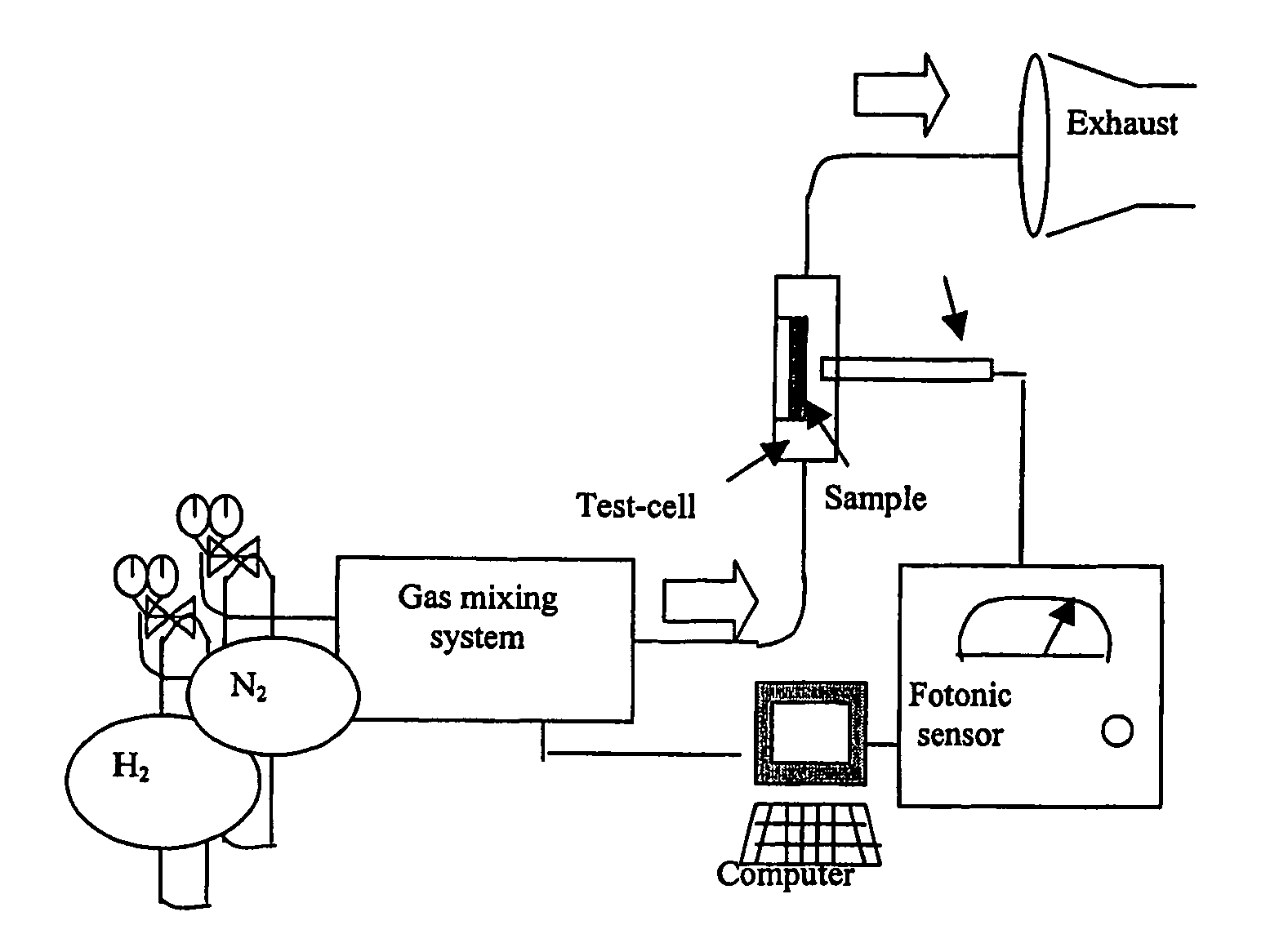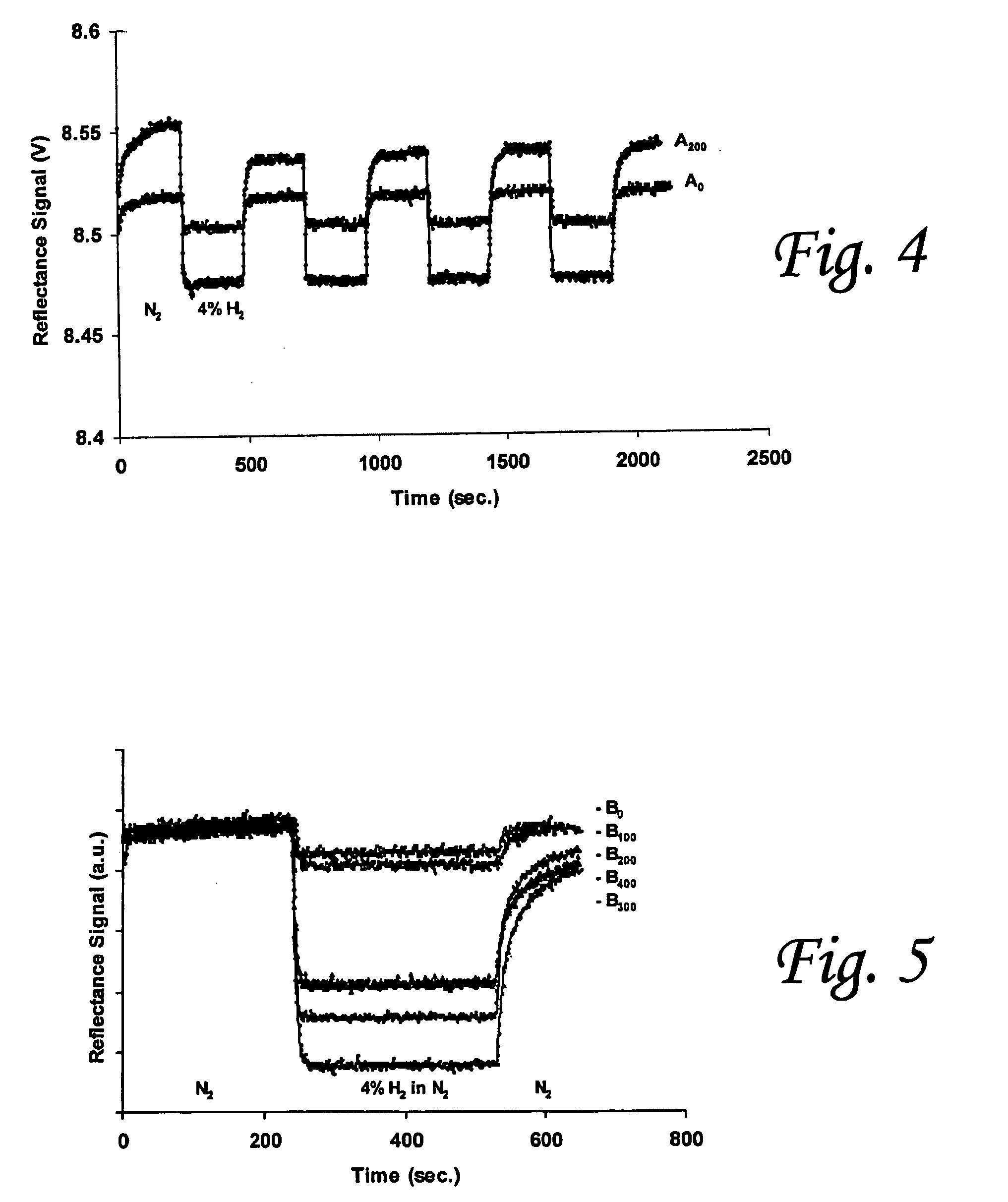Methods for forming palladium alloy thin films and optical hydrogen sensors employing palladium alloy thin films
a palladium alloy and thin film technology, applied in the field of hydrogen sensors, can solve problems such as poor sensor durability, and achieve the effect of relieving residual stress
- Summary
- Abstract
- Description
- Claims
- Application Information
AI Technical Summary
Benefits of technology
Problems solved by technology
Method used
Image
Examples
first embodiment
[0047] In the present invention, a 20 nanometer thick film of palladium (60% in at. %) and gold (40% in at. %) was deposited on an acetone pre-cleaned glass substrates (about 0.5 inch×0.5 inch) by DC magnetron sputtering of the alloy target (of the same composition) at constant current of 40 mA and 75 mTorr Ar pressure.
[0048] Two sets of these Pd (60 at. %) and Au (40 at. %) samples were initially investigated. The first set, included an as-deposited thin film (denoted A0) with no annealing, and a deposited thin film annealed at 200° C. (denoted A200). A second set, contained an as-deposited thin film and those annealed at temperatures of 100° C., 150° C., 200° C., 250° C., 300° C., 350° C., and 400° C., respectively, (denoted B0, B100, B150, B200, B250, B300, B350, and B400). All the annealing treatments were done in 760 Torr of Ar flowing at 1200 sccm for one hour.
[0049]FIG. 4 illustrates the optical reflectance responses of the as-deposited (A0) and 200° C. annealed (A200) thin ...
second embodiment
[0072] In the present invention, 20 nanometer thick alloy films of Pd and Au (40% at. %) were sputter deposited on glass substrates, with resulting nanocrystallites of about 7 to 8 nanometers in size measured by x-ray diffraction. The thin films were then annealed at 200° C. in an argon atmosphere for one hour. After annealing, each film was cured. The curing process consisted of two consecutive cycles of 4% hydrogen exposure for 10 minutes followed by exposure to pure nitrogen for 20 minutes at room temperature. After deposition and after each of the hydrogen exposure tests, the films were stored in a clear plastic storage container under ambient conditions. No special storage measures were taken for these films as this more closely mimics field deployed ambient exposure conditions.
[0073] Using the test station shown in FIG. 3, the reflectance response of the Pd and Au (40% at. %) alloy film for two separate pairs of exposure cycles at an operating temperature of 40° C., the first ...
PUM
| Property | Measurement | Unit |
|---|---|---|
| Grain size | aaaaa | aaaaa |
| Grain size | aaaaa | aaaaa |
| Temperature | aaaaa | aaaaa |
Abstract
Description
Claims
Application Information
 Login to View More
Login to View More - R&D
- Intellectual Property
- Life Sciences
- Materials
- Tech Scout
- Unparalleled Data Quality
- Higher Quality Content
- 60% Fewer Hallucinations
Browse by: Latest US Patents, China's latest patents, Technical Efficacy Thesaurus, Application Domain, Technology Topic, Popular Technical Reports.
© 2025 PatSnap. All rights reserved.Legal|Privacy policy|Modern Slavery Act Transparency Statement|Sitemap|About US| Contact US: help@patsnap.com



